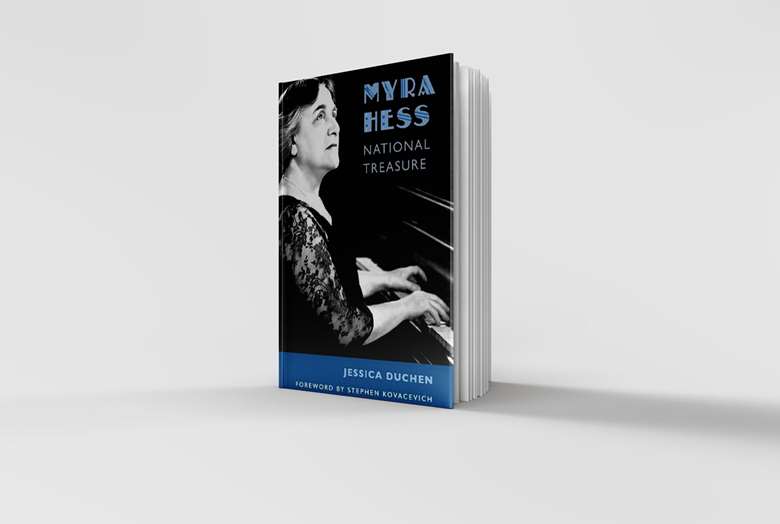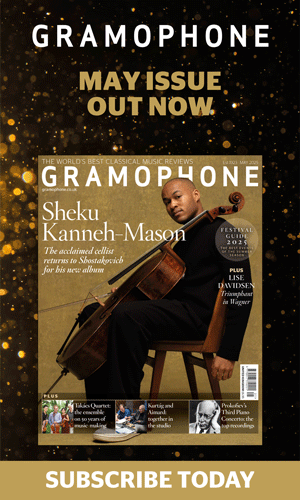Myra Hess: a national treasure revisited in Jessica Duchen’s biography
Jeremy Nicholas
Thursday, April 17, 2025
A compelling portrait of the iconic wartime pianist and cultural hero, brought vividly to life in a major new study

The subtitle is well chosen: National Treasure indeed. Famous pianists come and go, their careers and achievements fading more or less quickly with the passage of time. Myra Hess has never quite left the collective musical memory, for even if you know nothing of classical music, there’s that lovely piano piece she played. Even if you don’t know what it’s called you will probably have heard it at some point. Her transcription and recording of Jesu, joy of man’s desiring is part of the fabric. Then there are those pictures of her in the fur coat playing the piano during the Second World War at the National Gallery. She organised concerts in the middle of London during the Blitz, played on while bombs fell nearby, wearing a fur coat because she was so cold. She looks the part, doesn’t she? Indomitable, determined, uncompromising. Very British. Jack Hawkins on the bridge of a destroyer. Churchill with a jaunty V-sign and cigar. We shall never surrender.
Duchen thoroughly immerses us in Myra’s world – the celebrities, the nerves and periods of depression, the ribald sense of humour, and her huge circle of adoring friends
Myra Hess could have been the worst pianist in the world and that image of her would have endured. As it happens, she was one of the greatest of her day. Julia Myra Hess was born in north London on February 25, 1890. ‘She would have preferred to be called Julia,’ Jessica Duchen tells us. ‘Over the years, various people, including herself, nicknamed her Missie, the Dame, Auntie, Pishkosz, and sometimes Hyra Mess.’ She was among the most distinguished and successful pupils of the revered pedagogue Tobias Matthay (‘Uncle Tobs’), with whom she had a father/daughter relationship. Her career took off in the late 1920s. She was a star in the 1930s, as popular in the UK as she was in the US – perhaps even more so in the States, to which she travelled regularly before and after the war – and something of an icon for the next three decades. She died in 1965.
There are two earlier books about Hess (both, curiously, published by Hamish Hamilton) but none for half a century. This one is definitive. Duchen is a seasoned music journalist who is able to turn what is perhaps a niche subject into one of general interest. Assiduously researched and sourced by someone with a profound knowledge of pianists and the piano, it is helped by the author’s identification with her ‘heroine’: born two days before Dame Myra’s memorial service at St Paul’s Cathedral, growing up in Hampstead, sharing ‘the distanced background of Orthodox Judaism … physical height – five foot three – and the pianistic conundrum of small hands’. There are many previously unseen photographs reproduced within the text, excerpts from Hess’s post-war American diaries and private letters.
Duchen thoroughly immerses us in Myra’s world – the celebrities, the nerves and periods of depression, the ribald sense of humour, and her huge circle of adoring friends – and tells us the awful story of her unnecessary double mastectomy in 1934. When it comes to her subject’s sexuality, Duchen swerves, ducks and dives. No man appears to have formed an intimate relationship with her, and certainly she never lived with one. Her longtime ‘companion’ was Anita Gunn (nicknamed ‘Saz’), who looked after her needs from 1931 until her death. Personally, I don’t buy the ‘I’m wedded to the piano’ line. For ‘companion’ read ‘(discreet) partner’.
It’s not all perfect. There is rather too much Wikipedia history to put events in context (‘By early 1917 Germany had increased its U-boat fleet to 140, able to puncture the British blockade and resume unrestricted submarine warfare …’). And Duchen scuttles down a few rabbit-holes in her efforts to squeeze in everything she’s unearthed (‘The former home of William Holman Hunt, 10 Tor Gardens in Kensington, was now owned by the engineer and businessman Thomas Blair Reynolds, whose wife, Mabel Edith Reynolds, was John Galsworthy’s sister … Mabel’s nephew’s wife, Viola Sauter, reportedly helped dress [Myra] for her debut in 1907’).
The index is strangely selective. In a quick random search, I found no Saint‑Saëns, Purcell, MacDowell, Lipatti, Landon Ronald or Scriabin – talking of whom, there is one surprising omission. In October 1918 Dame Myra with Henry Wood gave the Proms premiere of Scriabin’s Prometheus: The Poem of Fire, neither a composer or work that one would associate with her. She played it in 1919 and 1922 (both again under Wood), and on at least one other occasion (in 1934 with the BBC Symphony Orchestra under Boult). One would have liked to know how this came about.
There are occasional niggles. Duchen confuses Shostakovich’s Preludes, Op 34 (played by Harriet Cohen in 1934) with the later Preludes and Fugues, Op 87 (published in 1952). Then there is the assertion that in a 1947 Carnegie Hall recital Hess played ‘Bach’s Adagio in G major (his transcription of Albinoni)’. Whatever the programme annotator may have thought it was, it wasn’t a transcription of Albinoni. Apart from borrowing some themes for a few early fugues, Bach never used any of the Italian’s music.
Duchen has been lucky in her publisher. The book is beautifully designed and produced, with proper stitch binding on high-quality paper, a handsome volume that sits well on a bookshelf. Try as I might, I found only one typo in the whole text: page 128 – your reviewer’s last name has an ‘h’ in it. No marks deducted. This is a highly desirable biography that honours a great musician.









